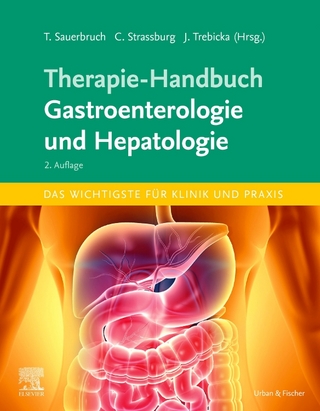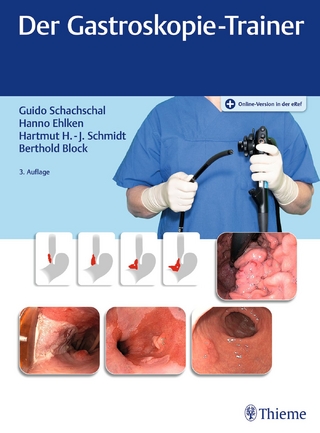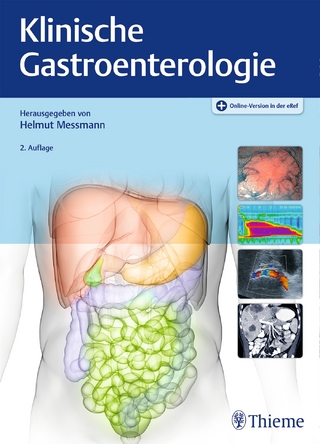
Pathogenesis of Functional Bowel Disease
Kluwer Academic / Plenum Publishers (Verlag)
978-0-306-43265-1 (ISBN)
- Titel ist leider vergriffen;
keine Neuauflage - Artikel merken
1. Historical Perspectives of Functional Bowel Disease.- 1. Evolution of Clinical Concepts.- 2. Life Events, Emotions, and Functional Disorders.- 2.1. Critique.- 2.2. Alternative Models of a Mind-Body Interaction.- 2.3. Widening Concepts of Mind-Body Interaction.- 3. Conclusion.- References.- 2. Role of Neural Control in Gastrointestinal Motility and Visceral Pain..- 1. Introduction.- 2. Role of the Autonomic Nervous System in GI Motility and Visceral Sensation.- 2.1. Enteric Nervous System.- 2.2. Visceral Afferent Mechanisms.- 2.3. Autonomic Efferent Innervation.- 2.4. Pain-Modulating Mechanisms.- 3. Evidence for Alteration in Pain Perception (Visceral and Somatic) and Colonic Motility in IBS.- 3.1. Colonic Motility.- 3.2. Visceral Sensation.- 3.3. General Pain Perception.- 4. Proposed Model for Alterations in Visceral Sensation and GI Motility in IBS.- References.- 3. Effects of Psychological Factors on Gastrointestinal Function.- 1. Introduction.- 1.1. Psychiatric Diagnoses.- 1.2. Psychometric Testing.- 1.3. Self-Selection Hypothesis.- 2. Direct Effects of Psychological Stress on Gastrointestinal Physiology.- 2.1. Esophageal Motility.- 2.2. Gastric Motility.- 2.3. Small Intestine.- 2.4. Colon.- 3. Indirect Effects of Psychological Stress on Gastrointestinal Physiology.- 4. Effects of Psychological Traits on the Perception and Reporting of Bowel Symptoms.- 5. Social Learning Influences on Gastrointestinal Symptoms and Physiology.- 6. Conclusions and Implications for Treatment.- 6.1. Stress.- 6.2. Effects of Psychological Traits on Perception and Reporting of Gastrointestinal Symptoms.- 6.3. Learned Illness Behavior.- References.- 4. Central Control of Gastrointestinal Transit and Motility by Brain-Gut Peptides.- 1. Introduction.- 2. Central Nervous Structures Influencing Gastrointestinal Motility.- 2.1. Hypothalamus.- 2.2. Medulla Oblongata.- 3. CNS Action of Peptides to Influence Gastrointestinal Motility and Transit.- 3.1. CNS Action of TRH to Stimulate Gastrointestinal Motor Function.- 3.2. CNS Action of Corticotropin-Releasing Factor (CRF) to Alter Gastrointestinal Motor Function.- 3.3. CNS Action of Opioid Peptides to Inhibit Gastrointestinal Motor Function.- 3.4. CNS Action of Bombesin to Inhibit Gastrointestinal Motor Function.- 3.5. CNS Action of Calcitonin to Inhibit Gastrointestinal Motor Function.- 3.6. CNS Action of Calcitonin Gene-Related Peptide (CGRP) on Gastrointestinal Motor Function.- 3.7. CNS Action of Neurotensin to Influence Gastrointestinal Motor Function.- 3.8. CNS Action of Other Peptides to Influence Gastrointestinal Motility.- 4. Summary and Conclusions.- 4.1. Brain Peptides and CNS Modulation of Gastrointestinal Transit.- 4.2. Brain Peptides and Modulation of Gastrointestinal Motility.- 4.3. Conclusions.- References.- 5. Effect of Diet on Intestinal Function and Dysfunction.- 1. Introduction.- 2. Effects of Eating on the Colon.- 3. Carbohydrate.- 3.1. Simple Sugars.- 3.2. Starch.- 4. Dietary Fiber.- 4.1. Definition and Classification.- 4.2. Actions of Wheat Bran and Ispaghula on the Colon.- 4.3. Effects of Bran and Ispaghula on Symptoms of Irritable Bowel.- 5. Other Dietary Factors.- 5.1. Food Allergy and Intolerance.- 5.2. Protein and Fat.- 6. Conclusions.- References.- 6. Disorders of Intestinal Motility Resulting from Drug Therapy.- 1. Introduction.- 2. Cholinergic Agents.- 3. Adrenergic Agents.- 4. Dopaminergic Agents.- 5. Opiates.- 6. Calcium Channel Blockers.- 7. Prostaglandins.- 8. Antibiotics.- 9. Miscellaneous.- 10. Summary.- References.- 7. Functional Diseases of the Esophagus.- 1. Introduction.- 2. Clinical Presentation.- 3. Classification of EMDs.- 3.1. Disorders of the UES.- 3.2. Primary EMDs.- 3.3. Secondary EMDs.- 4. Diagnostic Studies.- 4.1. Radiology.- 4.2. Fiberoptic Endoscopy.- 4.3. Radionuclide Transit Studies.- 4.4. Esophageal Manometry.- 4.5. Provocative Tests.- 4.6. 24-hr Motility Testing.- 5. Approach to the Diagnosis of EMDs.- 6. Psychologic Abnormalities in EMDs.- 7. Medical and Surgical Therapies.- 7.1. Disorders of the UES.- 7.2. Achalasia.- 7.3. Painful EMDs.- 7.4. Secondary EMDs.- 8. Future Perspectives.- References.- 8. Functional Causes of Disturbed Gastric Function.- 1. Normal Physiology.- 1.1. Functional Anatomy.- 1.2. Gastric Electrical and Motor Activity.- 1.3. Gastric Emptying in Relation to Gastric Motility.- 1.4. Regulation of Gastric Motility.- 2. Functional Disorders of Gastric Motility and Emptying.- 2.1. Diabetic Gastroparesis.- 2.2. Collagen Diseases.- 2.3. Primary Anorexia Nervosa.- 2.4. Dyspepsia.- 2.5. Gastric Dysrhythmia.- 3. General Conclusions.- References.- 9. Functional Disorders of the Small Intestine.- 1. Introduction.- 2. Motor Activity of the Small Intestine in Health.- 2.1. Interdigestive Motility.- 2.2. Postprandial Motility.- 2.3. Control Mechanisms.- 3. Absorption and Secretion in the Small Intestine.- 3.1. Water and Electrolyte Transport and Nutrient Absorption.- 3.2. Control Mechanisms.- 4. Function of the Small Intestine in IBS.- 4.1. Definition and Clinical Picture.- 4.2. Motility of the Small Bowel.- 4.3. Altered Absorption and Secretion.- 5. Summary and Interim Speculations.- References.- 10. Mechanisms and Management of Chronic Constipation.- 1. Introduction.- 2. The Diagnosis of Colonic Motor Dysfunction.- 2.1. The Initial Approach to the Patient.- 2.2. The Need for an Objective Definition of Constipation.- 2.3. Subjective Definitions of Constipation.- 2.4. Objective Variables of Colonic Function.- 2.5. A Working Definition of Slowed Transit Constipation.- 3. Mechanisms of Chronic Constipation.- 3.1. Normal Colonic Function.- 3.2. Mechanisms of Defecation.- 3.3. Secondary Causes of Constipation.- 3.4. Patterns of Chronic Constipation.- 3.5. Colonic Outlet Obstruction.- 3.6. Impaired Colonic Transit.- 3.7. Other Factors Contributing to Delayed Colonic Transit.- 4. Complications of Chronic Constipation.- 5. Treatment.- 5.1. Therapeutic Agents and Their Mechanisms of Action.- 5.2. Dietary Fiber.- 5.3. Laxatives and Cathartics.- 5.4. Agents That Promote Neurally Mediated Propulsive Colonic Contractions.- 5.5. The Use of Enemas.- 5.6. Surgery in the Treatment of Chronic Constipation.- References.- 11. Irritable Colon Syndrome.- 1. Epidemiology.- 2. Clinical Symptoms.- 3. Diagnosis.- 3.1. Differential Diagnosis.- 3.2. Diagnostic Studies.- 4. General Pathophysiology.- 4.1. Myogenic.- 4.2. Neural.- 4.3. Humoral.- 4.4. Gastrocolonic Response.- 5. Pathophysiology of Specific Condition.- 5.1. Constipation.- 5.2. Spastic Irritable Colon Syndrome.- 5.3. Painless Diarrhea.- 6. Treatment.- 6.1. Constipation Associated with Increased Motility.- 6.2. Constipation Associated with Decreased Motility.- 6.3. Diarrhea.- 7. Conclusion.- References.- 12. Association between Disturbances in Gastrointestinal Transit and Functional Bowel Disease.- 1. Esophageal Transit.- 2. Gastroduodenal Transit.- 3. Small Bowel Transit.- 4. Colonic Transit.- 5. Stress- and Meal-Related Alterations in GI Transit.- 6. Effects of Treatment on Altered GI Transit.- 7. Summary.- References.- 13. Abdominal Pain and Biliary Tract Dysmotility.- 1. Introduction.- 2. Bile Flow within the Biliary Tract.- 3. Biliary-Type Pain-Referred versus Real.- 4. Biliary Tract Disorders of Functional Nature.- 4.1. Gallbladder.- 4.2. Sphincter of Oddi.- 5. Sphincter of Oddi Manometry.- 6. Clinical Classification of Patients with Suspected Sphincter of Oddi Dysfunction.- 6.1. Biliary Type I.- 6.2. Biliary Type II.- 6.3. Biliary Type III.- 7. Primary Sphincter of Oddi Motor Dysfunction.- References.- 14. Disorders of the Anal Sphincters.- 1. Anatomy.- 2. The Incompetent Sphincter.- 2.1. Maintenance of Continence.- 2.2. Investigation of Patients with Fecal Incontinence.- 2.3. Normal Records.- 2.4. Disturbances in Sphincter Function in Patients with Fecal Incontinence.- 3. The Obstructed Sphincter.- 3.1. Normal Defecation.- 3.2. Causes of Impaired Defecation.- 4. The Irritable Anorectum.- References.- 15. Functional Bowel Disturbances in Childhood.- 1. Infantile Colic.- 1.1. Pathophysiology.- 1.2. Treatment.- 2. Gastroesophageal Reflux.- 2.1. Pathophysiology.- 2.2. Diagnosis.- 2.3. Treatment.- 3. Chronic Nonspecific Diarrhea (Toddler's Diarrhea).- 3.1. Pathophysiology.- 3.2. Diagnosis.- 3.3. Treatment.- 4. Constipation and Functional Fecal Retention.- 4.1. Physiology of Childhood Constipation and Functional Fecal Retention.- 4.2. Diagnosis.- 4.3. Treatment.- 5. Functional Recurrent Abdominal Pain.- 5.1. Pathophysiology.- 5.2. Diagnosis.- 5.3. Treatment.- 6. Chronic Intestinal Pseudoobstruction.- 6.1. Clinical Disease in Childhood.- 6.2. Pathophysiology.- 6.3. Treatment.- References.- 16. Surgical Approach to Functional Bowel Disease.- 1. Introduction.- 2. Motility Disorders of the Esophagus.- 2.1. Diffuse Esophageal Spasm.- 2.2. Achalasia.- 2.3. Zenker's Diverticulum.- 2.4. Lower Esophageal (Epiphrenic) Diverticulum.- 3. Motility Disorders of the Stomach.- 3.1. Gastric Dysrhythmias.- 3.2. Postgastrectomy Syndromes.- 4. Biliary Dyskinesia.- 4.1. Pathophysiology and Clinical Presentation.- 4.2. Surgical Management.- 5. Intestinal Pseudoobstruction.- 5.1. Chronic Idiopathic Intestinal Pseudoobstruction.- 5.2. Acute Colonic Pseudoobstruction.- 6. Colonic Dysmotility Syndromes.- 6.1. Colonic Diverticular Disease.- 6.2. Chronic Constipation.- 6.3. Hirschsprung's Disease.- 7. Summary.- References.
| Reihe/Serie | Topics in Gastroenterology |
|---|---|
| Zusatzinfo | 16 black & white illustrations, biography |
| Verlagsort | Dordrecht |
| Sprache | englisch |
| Gewicht | 850 g |
| Themenwelt | Medizinische Fachgebiete ► Innere Medizin ► Gastroenterologie |
| ISBN-10 | 0-306-43265-X / 030643265X |
| ISBN-13 | 978-0-306-43265-1 / 9780306432651 |
| Zustand | Neuware |
| Haben Sie eine Frage zum Produkt? |
aus dem Bereich


